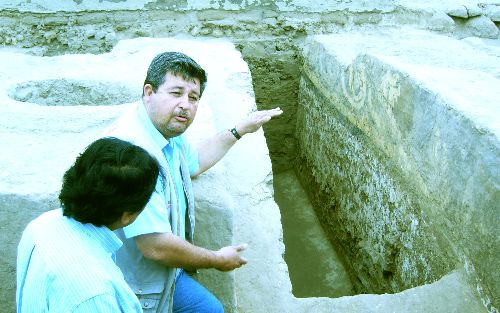
© J. H. MatternesAbout 4.4 million years ago, our ancestors were already upright, omnivorous and cooperative. That's the implication of a newly unveiled fossil of a stocky Ardipithecus ramidus female – Ardi for short – and fragmentary remains of another 35 individuals of the same species.
The first bones of Ardipithecus ramidus were found in an eastern Ethiopian desert in the early 1990s. Yet it has taken almost two decades to excavate, assemble and study all the fossils, which represent some of the oldest wood on the human evolutionary branch.
Humans last shared an ancestor with our closest living relatives, chimpanzees, around 6 million years ago. Though Ardipithecus is not that ancestor, they probably had many characteristics in common.
The story of humankind is reaching back another million years as scientists learn more about "Ardi," a hominid who lived 4.4 million years ago in what is now Ethiopia. The 110-pound, 4-foot female roamed forests a million years before the famous Lucy, long studied as the earliest skeleton of a human ancestor.
This older skeleton reverses the common wisdom of human evolution, said anthropologist C. Owen Lovejoy of Kent State University.
Rather than humans evolving from an ancient chimp-like creature,
the new find provides evidence that chimps and humans evolved from some long-ago common ancestor - but each evolved and changed separately along the way.
"This is not that common ancestor, but it's the closest we have ever been able to come," said Tim White, director of the Human Evolution Research Center at the University of California, Berkeley.
The lines that evolved into modern humans and living apes probably shared an ancestor 6 million to 7 million years ago, White said in a telephone interview.
But Ardi has many traits that do not appear in modern-day African apes, leading to the conclusion that the apes evolved extensively since we shared that last common ancestor.



